As an opportunistic predator, the American alligator will eat almost anything when hungry, including other alligators and carrion.
Dawn Jawman captured footage of an American alligator dragging a dead alligator across Lake Apopka in late July. Video : Dawn Jawman
Dawn Jawman captured footage of an American alligator ( Alligator mississippiensis ) dragging a dead alligator on Lake Apopka, Central Florida, Earth Touch News reported on August 25. Not long before, a video of a similar case - a live alligator dragging the tail of a dead alligator (which had turned white) on Lake Apopka - was also shared on Facebook.
An American alligator with a white-colored carcass on Lake Apopka in early July. Video: Meagan Tallman
Given the “long dead” appearance of the dragged alligators and their similar size to the living ones, the cases above are scavenging rather than actively hunting. American alligators, like many other crocodile species, do prey on their own kind, but there are often significant size differences. Cannibalism is even a major cause of juvenile deaths.
"It's rare for large alligators to kill and eat others of similar size. Usually, large alligators will eat much smaller ones. The telltale sign in these videos is the degree of bleaching of the dead alligators. If the alligator's skin has changed color, it means it has been dead for a while and has been exposed to the sun," said Dr. Adam Rosenblatt, an ecologist at the University of North Florida who has extensively studied American alligators and their black caiman ( Melanosuchus niger ) cousins.
Alligators are just as happy with dead meat as they are with live meat, even happier because it's essentially a free lunch. "The bottom line is alligators are always up for an easy meal, and there aren't many things easier than a big alligator carcass," Rosenblatt added.
It is likely that most of the wildlife that lives in the same area as American alligators will become food for them at one time or another, even after death. Experts have even recorded alligators dragging turtle carcasses from beaches into freshwater wetlands and climbing ashore to collect wild boar carcasses.
American alligators live mainly in the rivers, lakes and swamps of the southern United States. Their prey usually includes fish, turtles, snakes and small mammals. However, they are opportunistic predators and can eat almost anything when hungry, including carrion, other animals, and pets. With a length of 2.6 - 4.6 m and can weigh up to 450 kg, American alligators are considered dangerous to humans.
Thu Thao (According to Earth Touch News )
Source link



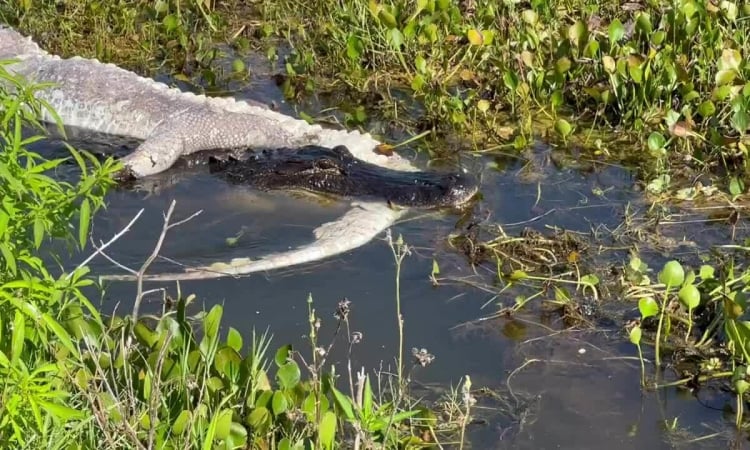
![[Photo] Prime Minister Pham Minh Chinh attends the World Congress of the International Federation of Freight Forwarders and Transport Associations - FIATA](https://vphoto.vietnam.vn/thumb/1200x675/vietnam/resource/IMAGE/2025/10/08/1759936077106_dsc-0434-jpg.webp)


![[Photo] Prime Minister Pham Minh Chinh inspects and directs the work of overcoming the consequences of floods after the storm in Thai Nguyen](https://vphoto.vietnam.vn/thumb/1200x675/vietnam/resource/IMAGE/2025/10/08/1759930075451_dsc-9441-jpg.webp)




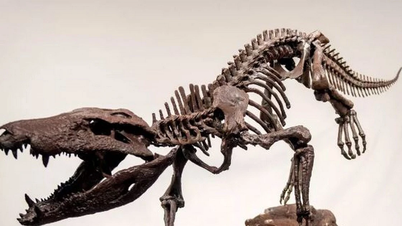



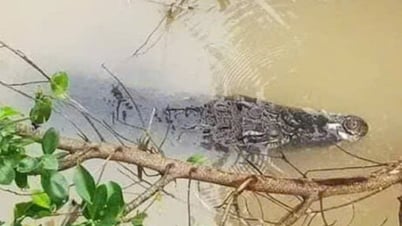

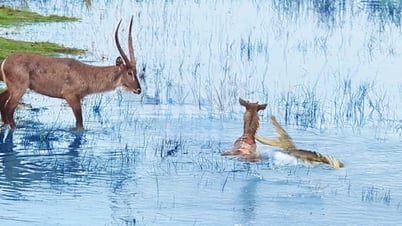
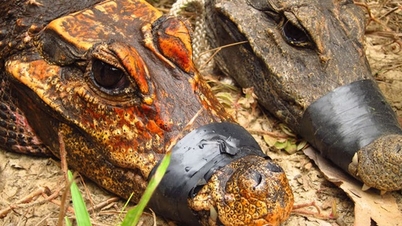




![[INFOGRAPHIC] Bigme HiBreak Pro Color, Smartphone for book lovers](https://vphoto.vietnam.vn/thumb/402x226/vietnam/resource/IMAGE/2025/10/08/1759930976900_info-dt-docsach-02-jpg.webp)


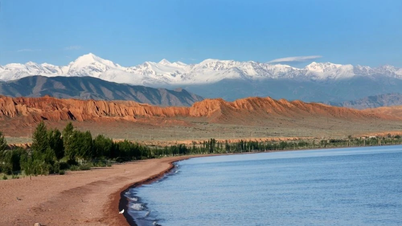











![[Photo] Closing of the 13th Conference of the 13th Party Central Committee](https://vphoto.vietnam.vn/thumb/1200x675/vietnam/resource/IMAGE/2025/10/08/1759893763535_ndo_br_a3-bnd-2504-jpg.webp)














































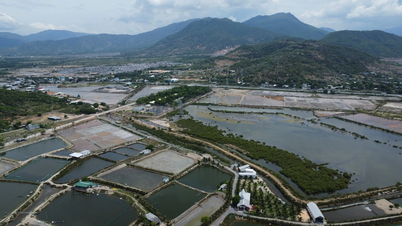


















Comment (0)